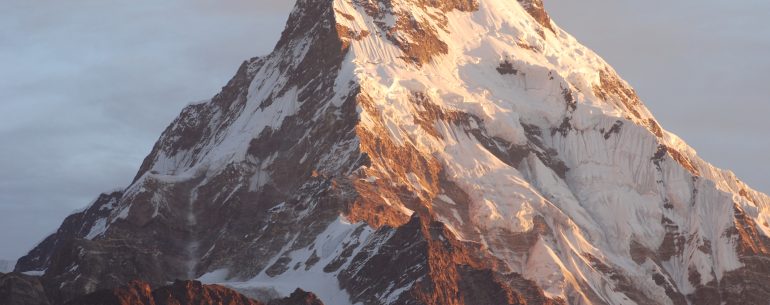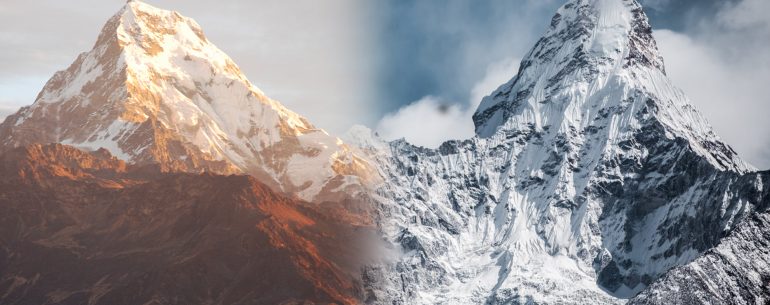Customs and traditions differ from one part of Nepal to another. A conglomeration lies in capital city Kathmandu where cultures are blending to form a national identity. Kathmandu Valley has served as the country’s cultural metropolis since the unification of Nepal in the 18th Century.A prominent factor in a Nepali’s everyday life is religion. Adding color to the lives of Nepalis are festivals the year round which they celebrate with much pomp and joy. Food plays an important role in the celebration of these festivals.
Hinduism followed by Buddhism, constitute two major religion of Nepal. Both these co-religionists are bound together by a sense of fellow-feeling and bonhomie particularly displayed in their worship of common deities and joint celebration of many festivals belonging to either religion or culture. Kumari, the Virgin Hindu Goddess, for instance, is selected from a Buddhist clan.
A remarkable feature of Nepal is the religious homogeneity that exists. The temples and stupas are rich repositories of wood carving, metal work, terracotta and stone sculpture. In their uniqueness they add glory and grandeur to the cultural scene of the Kingdom and tell a long history of native genius.
Religion:
Nepal was declared a secular country by the Parliament on May 18, 2006. Religions practiced in Nepal are: Hinduism, Buddhism, Islam, Christianity, Jainism, Sikhism, Bon, ancestor worship and animism. The majority of Nepalis are either Hindus or Buddhism. The two have co-existed in harmony through centuries.Buddha is widely worshipped by both Buddhists and Hindus of Nepal. The five Dhyani Buddhas; Vairochana, Akshobhaya, Rathasambhava, Amitabha and Amoghasiddhi, represent the five basic elements: earth, fire, water, air and ether. Buddhist philosophy conceives these deities to be the manifestations of Sunya or absolute void. Mahakaala and Bajrayogini are Vajrayana Buddhist deities worshipped by Hindus as well.
Hindu Nepalis worship the ancient Vedic gods. Bramha the Creator, Vishnu the Preserver and Shiva the Destroyer, are worshipped as the Supreme Hindu Trinity. People pray to the Shiva Linga or the phallic symbol of Lord Shiva in most Shiva temples. Shakti, the dynamic element in the female counterpart of Shiva, is highly revered and feared. Mahadevi, Mahakali, Bhagabati, Ishwari are some of the names given. Kumari, the Virgin Goddess, also represents Shakti.Other popular deities are Ganesh for luck, Saraswati for knowledge, Lakshmi for wealth and Hanuman for protection. Krishna, believed to be the human incarnation of Lord Vishnu is also worshipped widely. Hindu holy scripts Bhagawat Gita, Ramayan and Mahabharat are widely read in Nepal. Vedas, Upanishads and other holy scriptures are read by well learned Brahmin Pundits during special occasions.
The Religious way of Life:
Religion is an integral and deep-rooted part of Nepalese life. Temples, images, sacred paintings are to be seen everywhere. Majority of the people is Hindu in Nepal, nevertheless, Buddhism has also important place in this country. Hinduism and Buddhism are closely connected in Nepal and it would take a lifetime’s study to understand the complexities of country’s religious life. Some hints regarding religious matters. Visitors to Hindu temple or Buddhist shrine are expected to take off their shoes before entry as a mark of respect. In fact, a pair of open sandals is more convenient and comfortable while visiting the temples and stupas. In some of the temples entrance may be prohibited for the non-Hindus.
Leather articles are prohibited to be taken inside the temple premises.
Customs:
The diversity in Nepal in terms of ethnicity again makes room for various sets of customs. Most of these customs go back to the Hindu, Buddhist or other religious traditions. Among them, the rules of marriage are particularly interesting. Traditional marriages call for deals arranged by parents after the boy or girl come of age.
Nepalis do not eat beef. There are several reasons for this, one being that the Hindus worship cow. Cow is also the national animal of Nepal. Another interesting concept among Nepalis is division of pure and impure. “Jutho” referring to food or material touched by another’s mouth directly or indirectly, is considered impure by Nepalis. Nepalis consider cow dung to be pure for cleansing purposes. During menstruation women are considered impure and hence, are kept in seclusion until their fourth day purification bath.Nepal is a patriarchal society. Men usually go out to work while women are homemakers. However, in cities, roles can differ. Most Nepalis abide by the caste system in living habits and marriage. Rural Nepal is mostly agrarian, while some aspects of urban life carry glitz and glamour of the ultra-modern world.
Food:
Nepal does not have a distinct cooking style. However, food habits differ depending on the region. Nepali food has been influenced by Indian and Tibetan styles of cooking. Authentic Nepali taste is found in Newari and Thakai cuisines. Most Nepalis do not use cutlery but eat with their right hand.The regular Nepali meal is dal (lentil soup), bhat (boiled rice) and tarkari (curried vegetables), often accompanied by achar (pickle). Curried meat is very popular, but is saved for special occasions, as it is relatively more expensive. Momos (steamed or fried dumplings) deserve a mention as one of the most popular snack among Nepalis. Rotis (flat bread) and dhedo (boiled flour) also make meals in some homes.
Language:
Nepali is the national language of Nepal and is written in Devnagari Script. Other languages spoken in Nepal include Maithili, Bhojpuri, Tamang, Avadhi, Tharu and Newari, however most educated Nepalese can also speak and write English.
#Nepalvisitors








Leave a Reply